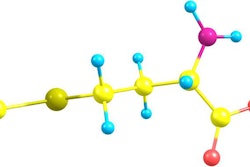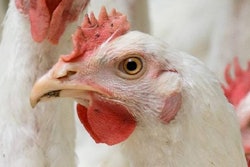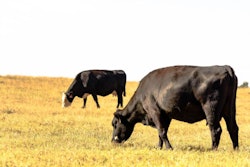
A combination of tactics can be used to combat ongoing high prices for cereals, vegetable proteins and alternative ingredients
We are faced with a new wave of high feed prices, and improving feed efficiency is perhaps the best solution to this problem.
This is a worldwide problem caused by a variety of reasons. It affects common cereals and vegetable proteins alike, and this drives prices up for alternative ingredients as well. Unless something dramatic happens in the immediate future, grain prices will remain high this year and perhaps the next one, too.
Below is a list of actions that can be considered with the help of a qualified nutritionist. Not all of these proposals can be applied at the same farm, but rather a selective combination must be used according to local conditions.
Better purchasing contracts
Purchasing power can be enhanced by increasing volume per transaction or the duration of a purchasing contract. In this way, lower long-term prices can be guaranteed. In fact, as early as 2004, when similar pricing issues were surfacing, several producers in the U.S. decided to commit to 10-year contracts with corn and soybean producers to lock in prices ahead of the forthcoming (biofuel) crisis. Apparently, this is a lesson that has been forgotten.
Reduced market weight
Broilers and growing pigs tend to deposit more fat than lean once their protein deposition potential peaks. This adversely affects the feed-to-gain ratio, meaning that weight gained late in life is not as efficiently gained as earlier on. This is just basic metabolism, because more energy is required to deposit one gram of fat compared to one gram of lean tissue. To find the optimal market weight, the use of a growth model can be of tremendous value.
Leaner genetics
Through the same mechanism described above (depositing less fat), leaner genetics can offer feed cost savings, assuming these genetics are not more expensive to buy. Leaner animals cost less to produce and this solution might be as easy as adjusting the genetic makeup. However, this is easier done with pigs than broilers as the latter offer fewer options.
Feed wastage
In many commercial units, and especially those that use inexpensive feeders, up to 25% of feed can be seen wasted due to poor management of feeders, feed and animals. Thus, it is imperative to resolve this chronic issue by training personnel, fixing or buying new feeders, and even relocating feeders. As wastage is reduced, feed-to-gain ratio is improved proportionately.
Animal health
It is widely known now that healthy animals grow leaner and more efficiently compared with those of suboptimal health. Malnutrition early in life is also “compensated” by depositing more fat and organ tissue later when nutrition becomes normal again. Lean deposition potential is lost forever once animals reach their protein deposition peak.
Additives
All additives should be evaluated based on return on investment. This should be a practice exercised at least twice every year. Usually, additives that improve growth below 5% are difficult to justify even during the best of times. A critical eye should be cast on all additives, constantly questioning whether they really are worth the expense and logistical trouble.
Grinding cereals
It has been determined that for every 100 microns reduction in particle size, feed efficiency improves by 1.4%. As an example, assume that cereals are ground at 900 microns (medium-coarse) and feed efficiency is at 2.9. If particle size is reduced to 600 microns, feed efficiency is expected to be improved by 4.2% and be 2.68. This improvement in feed efficiency should not be outweighed by the cost of grinding cereals to such reduced particle size. This applies to pigs; broilers can handle coarse feed without much trouble, although recent evidence suggests rapidly growing birds may benefit from a finer grind.
Enzymes
Certain enzymes work efficiently against the major non-starch polysaccharides found in cereals, especially in wheat (arabinoxylans) and barley (beta glucans). If these cereals are of poor quality (as defined by a large concentration of non-starch polysaccharides), the addition of a cereal-specific enzyme should increase metabolizable energy concentration by about 50 kcal/kg complete feed. The cost of using such an enzyme should not be outweighed by the cost of providing a similar amount of energy through other sources (lard, tallow, soy oil).
Mycotoxins
Young animals invariably suffer from lower performance when fed diets with high levels of mycotoxins. It is best to determine the predominant mycotoxins for the cereals in use and then apply a specific product, instead of using a blanket approach that usually costs more and does not cover region-specific mycotoxin problems. There is some evidence that adding extra methionine may partially address the adverse effects of certain, but not all, mycotoxins.
Balanced diets
This requires the use of a growth model to compare nutrient requirements versus nutrient supply. In addition, a qualified nutritionist is required to assess the changes needed to match these two aspects to cut cost by reducing excesses, covering deficiencies, or preferably both.
Pelleting feed
Pelleted feed is most likely to improve feed-to-gain by 5% to 15% depending on diet nutrient composition, ingredients used and, of course, the weight class of the animals. For example, greater improvements are expected in younger animals than those closer to market age. As always, the extra cost of pelleting should not be greater than expected benefits.
Cereal alternatives
Usually, this is the first solution that comes in mind when cereal prices go up. But, unless a large enough quantity is secured before the market adjusts, it is highly unlikely such ingredients will remain price competitive for long. It is a fact in economics: When the prices of reference ingredients increase, the prices of alternatives also increase just below the point where the use of the such alternatives is no longer financially rewarding. Nevertheless, such alternatives include sorghum, rye, triticale, wheat byproducts, citrus byproducts, tomato pomace, sugar beet pulp, tapioca, and many other, usually high-fiber, industrial byproducts.















